| Designation: | Type 89/PTZ-89 |
 |
|---|---|---|
| Manufacturer: | NORINCO - China North Industries Group Corporation - CNGC | |
| Product type: | Armoured Vehicles | |
| Name: | Self-propelled gun |
The Type 89 (manufacturer designation PTZ-89) is the 120mm self-propelled anti-tank gun (tank destroyer) developed by 447 Factory in the early 1980s. The weapon system can provide a highly mobile and lethal anti-tank fire to meet the threat of enemy main battle tanks. Around 40~80 examples are believed to have been delivered to the PLA since 1989. They are deployed in Beijing Military Region and Jinan Military Region as the division anti-tank reserves.
As a result of new armour technologies such as composite armour and explosive reaction armour (ERA) being introduced in the 1970s, armour protection of the main battle tank (MBT) began to outpace most anti-tank weapons. Conventional high explosive armour piercing (HEAP) rounds became inadequate when facing the latest MBTs such as the Soviet T-72 and Germany Leopard 2. This has led to the introduction of the armour piercing fin stabilised discarding sabot (APFSDS) round fired from the large calibre (120mm~125mm) high-pressure smoothbore gun.
China began its ambitious second-generation MBT Feng Bao programme in the late 1970s as a counter to the Soviet T-72. Using the then latest West Germany Leopard 2 as a pattern, the Feng Bao MBT was planned to be fitted with a 120mm high-pressure smoothbore main gun capable of firing all NATO standard ammunitions including the APFSDS. China approached West Germany to seek the L44 smoothbore gun technology but was refused. This made the PLA determined to develop the 120mm smoothbore gun independently.
In 1978 the PLA officially approved the development of the Western-style 120mm high-pressure smoothbore gun, which can be fitted both on the Feng Bao MBT and the future division self-propelled anti-tank gun system. The fact that the two systems shared the same gun design and ammunitions could simplify the requirements for logistic support significantly. The initial design target was the capability of firing APFSDS rounds to penetrate the front armour of the Soviet T-72 MBT at a distance of 2,000m, with the future development target being capable of penetrating the front armour of all Western and Soviet MBTs introduced in the 1980s.
The first three prototypes of the 120mm smoothbore gun were completed in 1979. From February 1979 to October 1980 over 1,000 APFSDS rounds have been test fired from these guns. By 1981 the basic design of the 120mm smoothbore gun was completed. On 27 February 1979, the 82-2 design achieved penetrating 204mm/68 degree armour at a speed of 1,646m/s. Among several design proposals, the 82-14 design was chosen as the final design. Fire tests showed that the muzzle velocity of this 120mm smoothbore gun reached over 1,700m/s, with 120mm/68 degree iron armour penetration velocity 1,300m/s and 204mm/68 degree composite armour penetration velocity 1,411.2m/s.
However, due to political reasons and changing requirements, the PLA decided to give up the Western-style 120mm smoothbore gun design in favour of the Soviet-style 125mm smoothbore gun design, which has two distinctive advantages—the automatic gun-loader and the ability to fire anti-tank guided missile (ATGM). The 120mm smoothbore gun project continued as an anti-tank weapon system, which later led to the introduction of the Type 89 (PTZ-89) self-propelled anti-tank gun (tank destroyer).
The prototype of the Type 89 was completed in 1984, and the fire test was carried out in the same year. In 1985, the Type 89 was demonstrated in a test site in Nankou, Beijing. The APFSDS rounds fired by the anti-tank gun penetrated 450mm armour at a distance of 2,000m. Various tests were carried out between 1987 and 1988 before the initial batch production began in late 1988. By 1989 around 20 examples were delivered to the PLA, and the Type 89 received its design certificate in 1990. It is estimated that more than 100 vehicles have been built so far.
Despite the Type 89’s success in its development, the necessity of such a weapon system became questionable soon after it entered service. Following the end of the Cold War and the restoration of Sino-Soviet/Russia relation in the early 1990s, the possibility of a large-scale invasion on China’s land has become more remote than ever. Future land warfare demands new generation weapon systems to be lighter, smarter and highly mobile. Cold War era dinosaurs like the Type 89 have little, if any, place in the modern battlefield environment.
The Type 89 SP anti-tank gun is normally found in the anti-tank battalion of the artillery regiment organic to an armoured division. Each battalion has 18 Type 89 SP anti-tank guns and some anti-tank guided missiles (ATGMs).
Around two PLA armoured divisions are believed to have fielded the Type 89, while other armoured divisions are still using the towed Type 73 or Type 86 100mm anti-tank gun.
The Type 89 is based on the Type 321 utility tracked chassis, the same chassis used by many artillery weapons in service with the PLA, including the Type 83 152mm self-propelled howitzer and the Type 89 multiple rocket launcher. The powerpack is located in the front of the vehicle, with the turret and combat compartment in rear. The max road speed of the vehicle is 55km/h. The driver is seated in the front-left, with the commander, gunner and loader seated in the combat compartment. A rear hatch is provided for rapid loading of ammunitions.
The main armament is a 120mm/50-calibre high-pressure smoothbore gun with a thermal sleeve and a semi-automatic gun loader. The fume extractor is located in the middle section of the gun barrel. The gun can fire 10 rounds in one minutes. The vehicle carries 30 rounds.
The gun can fire APFSDS, HEAT and HEAT-FRAG. The APFSDS round has a muzzle velocity of 1,660m/s and a maximum fire-range of 2,500m. The high explosive (HE) round has a muzzle velocity of 960m/s and a maximum fire-range of 9,000m.
Auxiliary weapons include one 7.62 mm coaxial machine gun, with a maximum fire-range of 1,800 m and a fire rate of 250 rounds/min. A 12.7-mm/50-calibre anti-aircraft machine gun is mounted on the command cupola, with a maximum fire-range of 2,000 m.
Fire accuracy is attained by a TSFCS fire control system with night vision and laser rangefinder input. The 120mm main gun is not stabilised, therefore the Type 89 cannot fire while moving.
The armour protections of the Type 89 is relative thin (<50mm), partially due to the limitation of the maximum load of the Type 321 chassis. The turret is protected by storage racks to provide additional protections against HEAT projectiles. There are four smoke grenade launchers on each side of the turret. Additional smoke can be generated by injecting diesel fuel into the engine’s exhaust. The crewmembers are protected by a collective NBC protection system and an automatic fire suppression system.
The Type 89 is powered by a liquid cooled, turbocharged, 12-cylinder, 4-stroke 12150L diesel engine, which provide 520 hp. The combat weight of the vehicle is 31 tons.
|
||||||||||||||||||||||||||
|
||||||||||||
 |
 |
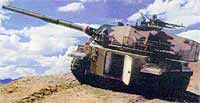 |
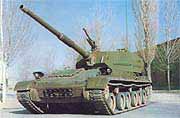 |
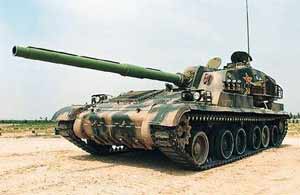 |
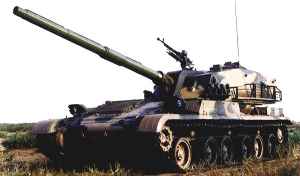 |
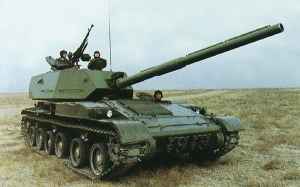 |
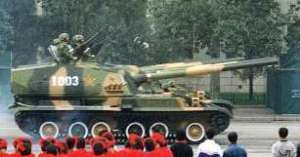 |
 |
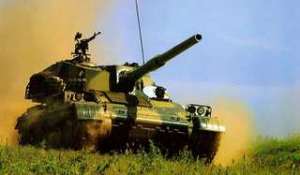 |
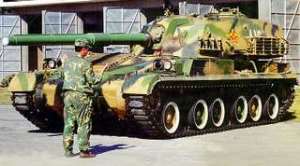 |
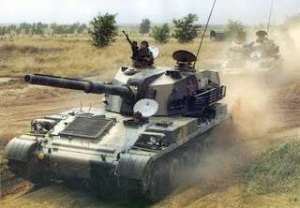 |
 |

